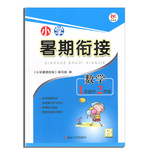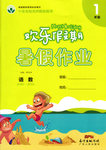题目内容
The Coca-Cola Company ___________ wiser to leave the old Coke alone and introduce New Coke as a brand extension. 【黑龙江省哈市五县2011年高考模拟试卷英语卷(22)】【情态动词及虚拟语气】
A. might have been B. can’t have been
C. must have been D. can have been
A
考查虚拟语气。意为“可口可乐公司本应聪明一点, 让老牌可乐照卖不误,同时将新口味可乐作为品牌延伸推向市场。”

 学而优暑期衔接南京大学出版社系列答案
学而优暑期衔接南京大学出版社系列答案 Happy holiday欢乐假期暑假作业广东人民出版社系列答案
Happy holiday欢乐假期暑假作业广东人民出版社系列答案— The Coca-Cola company is one of the of the match.
— No wonder there are many Coca-Cola pictures around the sports field.
|
A.players |
B.visitors |
C.sponsors |
D.judges |
To understand the marketing concept, it is only necessary to understand the difference between marketing and selling. Not too many years ago, most industries concentrated primarily on the efficient production of goods, and then relied on "persuasive salesmanship" to move as much of these goods as possible. Such production and selling focuses on the needs of the seller to produce goods and then convert them into money.
Marketing, on the other hand, focuses on the wants of consumers. It begins with first analyzing the preferences and demands of consumers and then producing goods that will satisfy them. This eye - on - the - consumer approach is known as the marketing concept, which simply means that instead of trying to sell whatever is easiest to produce or buy for resale, the makers and dealers first endeavor to find out what the consumer wants to buy and then go about making it available for purchase.
This concept does not imply that business is benevolent(慈善的) or that consumer satisfaction is given priority over profit in a company. There are always two sides to every business transaction -- the firm and the customer -- and each must be satisfied before trade occurs. Successful merchants and producers, however, recognize that the surest route to profit is through understanding and meeting to customers. A striking example of the importance of meeting to the consumer presented itself in mid - 1985, when Coca Cola changed the flavor of its drink. The non - acceptance of the new flavor by a significant part of the public brought about a prompt(果断的) restoration(恢复) of the Classic Coke, which was then marketed alongside new. King Customer ruled!
1. The marketing concept discussed in the passage is, in fact, __________.
|
A.the practice of turning goods into money |
|
B.making goods available for purchase |
|
C.the customer- centered approach |
|
D.a form of persuasive salesmanship |
2. What was the main concern of industrialists before the marketing concept was widely accepted?
|
A.The needs of the market. |
|
B.The efficiency of production. |
|
C.The satisfaction of the user. |
|
D.The preferences of the dealer. |
3.According to the passage, the underlined part "to move as much of these goods as possible" ( Para. 1 ) means _________.
|
A.to sell the largest possible amount of goods |
|
B.to transport goods as efficiently as possible |
|
C.to dispose of these goods in large quantities |
|
D.to redesign these goods for large - scale production |
4. What does the restoration of the Classic Coke best illustrate?
|
A.Traditional goods have a stronger appeal to the majority of people. |
|
B.It takes time for a new product to be accepted by the public. |
|
C.Consumers with conservative tastes are often difficult to please. |
|
D.Products must be designed to suit the taste of the consumer. |